2015 Student Participants

Lavell Allen, UMES
Antimicrobial susceptibility of Salmonella isolates recovered from shrimp
University of Maryland Eastern Shore
Faculty mentor: Dr. Salina Parveen
Graduate Mentor: Salah Elbashir
Antimicrobial resistance is a major concern to human health. Antimicrobial multidrug resistance has been observed among many pathogens isolated from seafood. This study investigated the antimicrobial susceptibility of Salmonella isolates recovered from shrimp to nine antibiotics. Twenty-four isolates were recovered from domestic and imported shrimp samples (12 sample/type) collected from local retail market on the Eastern Shore from August 2013- July 2014. Mueller-Hinton agar plates were used to perform disk diffusion assay using ampicillin, chloramphenicol, ciprofloxacin, erythromycin, gentamicin, kanamycin, streptomycin, trimethoprim/ sulphamethoazole, and tetracycline. Salmonella was found to be resistant to ampicillin, chloramphenicol, ciprofloxacin, erythromycin, streptomycin and tetracycline. Intermediate resistance was found towards erythromycin and streptomycin, but they were susceptible to gentamicin, kanamycin and trimethoprim/sulphamethoazole. Overall analysis concluded multidrug resistance in Salmonella, which emphasizes the great public hazard of multidrug resistance.

Anthony Cooper, Florida A&M University
Population ecology of Atlantic menhaden (Brevoortia tyrannus) in the Maryland Coastal Bays
Florida A&M University
Faculty Mentor: Dr. Paulinus Chigbu
Graduate Mentor: Ejiroghene Mayor
The Atlantic menhaden, Brevoortia tyrannus, are very abundant along the West Atlantic and are primary consumers of phytoplankton and zooplankton in ecosystems, acting as forage fish for other fish species, and supporting a huge fishery used for production of fish meal and industrial oil. The population ecology of menhaden in the Maryland Coastal Bays (MCBs) was assessed using data from trawl surveys conducted by the Maryland Department of Natural Resources from 1990 to 2012. In the MCBs, B. tyrannus abundance and biomass varied seasonally and across the bays. Fish abundance was positively correlated with temperature but inversely correlated with water depth. However, fish total length was positively correlated with water depth but negatively correlated with salinity.

Shynna Dale, Alabama A&M University
Population ecology of weakfish in the Maryland Coastal Bays
Alabama A&M University
Faculty Mentor: Dr. Paulinus Chigbu
Graduate Mentor: Rebecca Peters
Weakfish, Cynoscion regalis, a marine fish of the drum family Sciaenidae, is a common inshore species occurring between Cape Cod, Massachusetts, and southern Florida. It undergoes spring migration from offshore waters of Virginia and the Carolinas to appropriate estuaries and spawning areas, then makes a return migration in the late fall to overwintering grounds. This seasonal migration causes weakfish to be vulnerable to inshore fisheries during the warmer months of the year. In 2008 weakfish stocks were considered depleted due to natural mortality. Data collected by Maryland Department of Natural Resources Trawl Surveys from 1990 to 2012 was used to assess the variation in abundance, biomass, and size of weakfish in the Maryland Coastal Bays (MCBs). Catch-per-unit-effort (CPUE) was used as an indicator of abundance, and regression analysis was used to determine if a relationship existed between CPUE and environmental variables at each site in the MCBs. Weakfish abundance peaked in July, while biomass peaked in June. The average lengths of weakfish were largest in June and smallest in July and August. Abundance was greatest in the northern portion of the bays. Their abundance was significantly correlated (p <0.05) with salinity in July and August with highest CPUE occurring at salinity <28ppt. Information on the spatial and temporal distribution of weakfish in the MCBs is important for helping to rebuild weakfish stocks.

Alex Davis, UMES
Isolation of Aeromonas hydrophila and Vibrio parahaemolyticus from field samples
University of Maryland Eastern Shore
Faculty Mentor: Dr. Eric May
Graduate Mentor: Chanelle White
In the duration of this research, two water-borne species of pathogenic bacteria were being studied. The purpose of this experiment is to test whether the bacteria can be transported on land and persist in soil after a flooding event occurs. This research will be beneficial to the local population of the Eastern Shore area, and possibly on a national and international scale. Given, farms and other crop produce companies reside along the Chesapeake Bay and marshes in this area, the food being consumed by us humans can very well affect our health if contaminated by these bacteria. These bacteria can cause various gastro-intestinal diseases and other illnesses if consumed into our bodies. Based on the results, analyses of the fecal coliforms from soil samples (Table 1) revealed that for sites 2 and 4, the average coliform counts created a possible trend in data. The total fecal coliform counts and E. coli counts from samples sites presented as colony forming units per gram. Moreover, samples that were examined for the presence of A. hydrophilawere analyzed and isolated by characterization to the genus only. The final characterization will be determined by API strips, thus the data here (Table 2 left) is considered presumptive. Additionally, the samples analyzed for Vibrio parahaemolyticus showed that the averages for sites 1, 2, and 4 were 2500, 897, 477 respectively. Based on the data given, these averages suggest a possible trend within the results of this experiment.
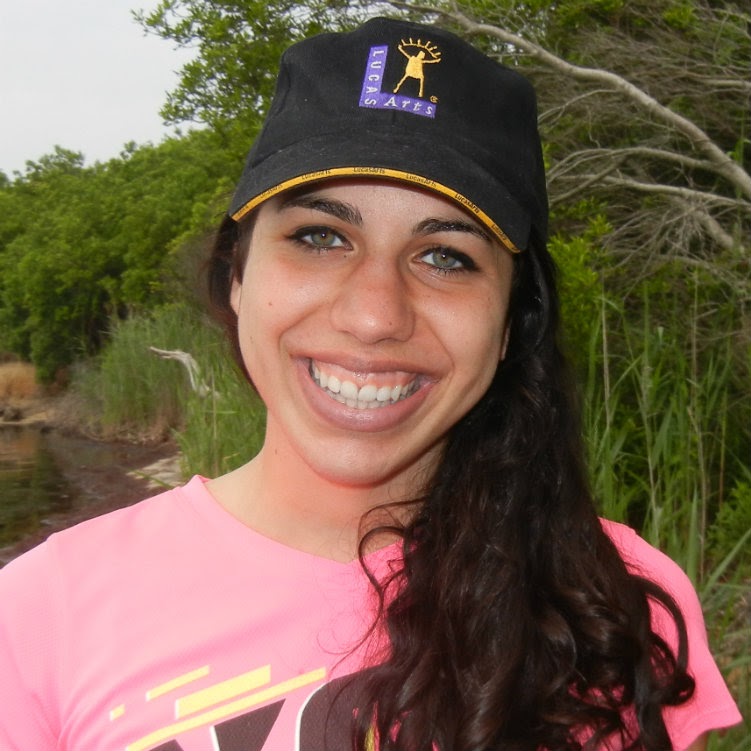
Veronica De Pascuale, Oberlin College
Prevalence of Vibrio vulnificus and Vibrio parahaemolyticus in the Maryland Coastal Bays
Faculty Mentors: Dr. Ligia Da Silva, Dr. Salina Parveen, and Dr. Paulinus Chigbu
The bacterial family of Vibrionaceae is indigenous to aquatic seawater environments such as the Maryland Coastal Bays. Vibrio vulnificus (Vv) and Vibrio parahaemolyticus (Vp) are both pathogenic bacteria. Understanding the distribution of Vibrio species is crucial because of the health concerns associated with the bacteria. The aim of this study was to evaluate the overall abundance of bacteria with a focus on Vibrio species in the Maryland Coastal Bays. Seawater samples were collected from 10 different sites that differ with regard to water quality. The total bacteria count (TBC) was determined by two methods: Total plate count and Epifluorescence microscopy. The most-probable-number (MPN) methodology was used to estimate the population of Vp and Vv. In addition to the bacteriological analysis, the environmental parameters of temperature and salinity were measured using YSI 6600 multiparameter meter. The average bacteria count from the spread plate method was 2.21 log CFU ml-1. Vv comprised 5.09% of the total bacteria count while Vp comprised only 2.02% of the total bacteria count. Vv ranged from 0.30 to 2.48 log MPN ml-1 at the sites tested. Lower Vp count was observed at the sites with a range of 0.30 to 1.97 log MPN ml-1. These results are similar to those previously reported in the Maryland Coastal Bays. There was no significant correlation between the environmental parameters and the Vibrio spp. Since both Vv and Vp peak in the summer, there is a potential for a risk of wound infections and gastrointestinal illness based on this data.
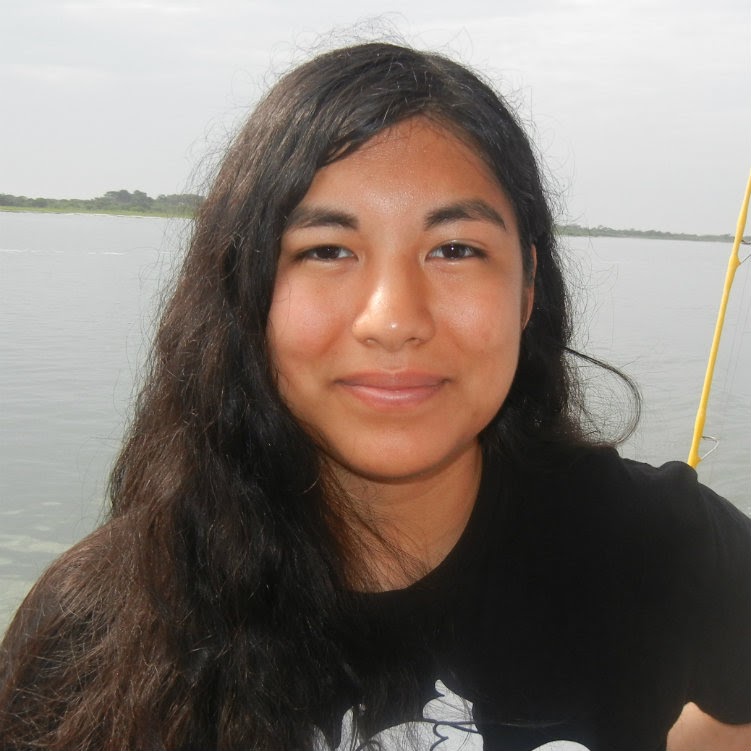
Sedona Dorsett, University of Denver
Abundance and distribution of the amphipod Paracaprella tenuis (Crustacea: Senticaudata: Caprellidae) in Maryland Coastal Bays, USA, with notes on life history
University of Denver
Faculty Mentor: Dr. Andrés Morales-Nùñez
Paracaprella tenuis is a common species of amphipod distributed along the Atlantic coast of the United States. The abundance, distribution, life history, reproductive biology, and population dynamics of P. tenuis have received little attention in Maryland Coastal Bays. During monthly benthic surveys at 13 stations in the Maryland Coastal Bays (MCBs) from March to October 2012, high densities of P. tenuis were found in Chincoteague Bay in association with the macroalgae Ceramium sp. Juveniles were first observed in March and remained present until October. Ovigerous females began to appear in the samples in spring (April) and were most abundant this same month. Males were presented during all months. Paracaprella tenuis in MCBs reproduces continuously, with ovigerous females occurring from April (early/spring) through October (early/fall).
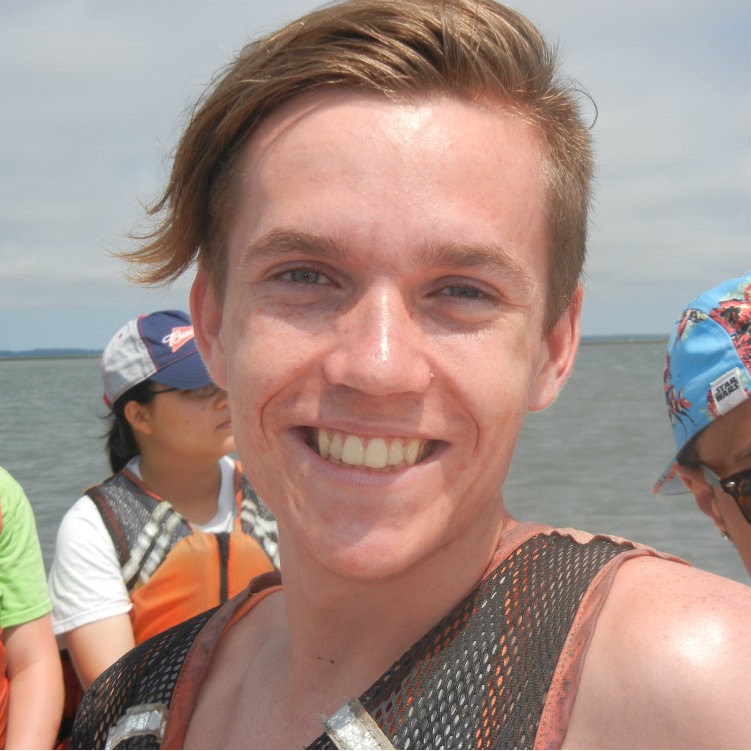
Hiram Dunn, University of California, Santa Cruz
Size at sexual maturity of female Jonah crab (Cancer borealis) in Maryland
University of California Santa Cruz
Faculty Mentor: Dr. Brad Stevens
Graduate Mentor: Stephanie Martínez-Rivera
Jonah crabs, Cancer borealis, have long been considered a bycatch of the lobster industry. Jonah crab harvest is not regulated; there are no fishing size limits, nor restrictions to protect females. I sampled Jonah crabs from one area in the Maryland-Virginia coastal zone from a local fishing vessel in June and July of 2015. This study is based on examination of the gross anatomy of 49 crabs and on histological preparations from 29 crabs. Ovary development stages were created and ordered based on area of oocytes, color and size of ovary, and the presence of sperm plugs. Four stages were observed but five are identifiable. Size at 50% sexual maturity (SM50), for females, as indicated by vulvar condition and oocyte area, was estimated to be 49.46 mm carapace length (CL). No prior information or study has been published concerning female Jonah crabs. This fishery-independent data is vital to ensure long-term sustainability, and develop appropriate management for this species.

Kyle Farrington, Hampton University
Contaminants of emerging concern in the Maryland Coastal Bays
Hampton University
Faculty Mentor: Dr. Ali Ishaque
Graduate Mentors: Chelsea Richardson
The Maryland Coastal Bays (MCBs) play a quintessential role in the ecosystem, environment, and economy for the areas surrounding Maryland and Delaware because of the diverse marine ecology. Contaminants of emerging concern (CECs) are chemicals from manmade products being discovered in water that hitherto were not spotted or detected at levels that are significantly different than expected; their presence poses a risk to aquatic life, human health and the environment. Limited research has been done on CECs for the MCBs mainly due to the recent discovery of emerging contaminants and advanced technology. Hence the objective of this study is to identify the emergent contaminants in this region. Contaminants of emerging concern are composed of numerous compounds that have unknown effects in the environment. They include antibiotics, hormones, anti-inflammatory drugs, antiepileptic drugs, endocrine disrupting compounds, plastic additives, and pharmaceuticals. Water samples were collected from 13 sites in the MCBs. The samples were pretreated by filtration followed by solid-phase extraction using the Dionex Auto Trace 280 method for endocrine disruptors in water. The samples were then analyzed with Gas Chromatography-Mass Spectrometry (GC-MS). Chemical ions such as Progesterone, Acetaminophen, Ibuprofen, Di-n-octyl Phthalate, and Triclosan were found at trace levels.
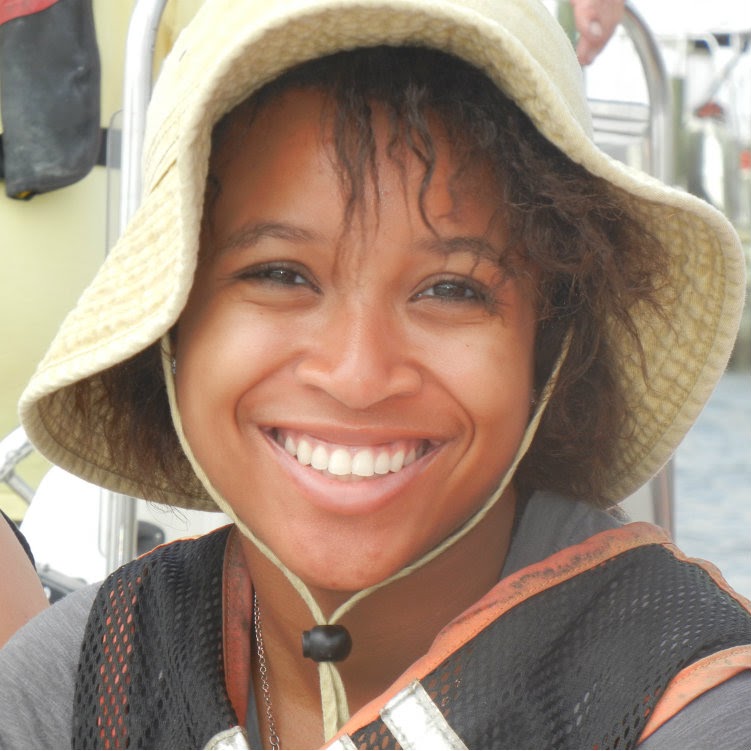
Cassandra Harris, Savannah State University
Alkaline phosphatase activities of water column fractions in the Maryland Coastal Bays
Savannah State University
Faculty Mentor: Dr. Nianhong Chen
Graduate Mentors: Dev Gurung
Phosphatase removes a phosphate group from its substrate by hydrolyzing phosphoric acid monoesters into a phosphate ion and an organic molecule. The extracellular phosphatases, produced by phytoplankton and bacteria in water, are extracellular enzymes that convert dissolved organic phosphorus into inorganic phosphate that phytoplankton and bacteria can use (Panosso, 2001; Hoppe 2003). Production of extracellular phosphatase by phytoplankton is regulated by availability of inorganic phosphorus (e.g. phosphate ion). Therefore, levels of extracellular phosphatase activity is an indicator of availability of inorganic phosphorus for phytoplankton. In this study, the water samples collected at the surface of the Maryland Coastal Bays were fractioned into large phytoplankton (>1.2 μm), picoplankton and bacteria (0.22 – 1.2μm), and dissolved fraction ( < 0.22μm) using micropore cellulose fiber filters (Koch et al, 2009). APA is measured in the whole-water and each fraction using the 4-methylumbelliferyl phosphate as the fluorogenic substrate (Hoppe, 1983). The maximum alkaline phosphatase activity, Vmax, is calculated as production rate of MUF in each sample. Our results show significant variations in Vmax in the picophytoplankton fractions among the sites. In particular, the highest APA values were observed at site 9, where low dissolved phosphate is expected.

JoEllen Holland, UMES
Inorganic contaminant analysis in dogfish (Mustelus canis) tissue from the Delaware Bay
University of Maryland Eastern Shore
Faculty Mentors: Dr. Ali Ishaque
Graduate Mentor: Tom Miller
Metals are capable of entering elasmobranchs through dietary uptake and aqueous intake. The different modes of accumulation and how they interact with the body can cause different tissues to have different metal concentrations. Very little is known about the concentrations of metals in Mustelus canis commonly found in the Delaware Bay. In this study the concentrations of metals in liver, spleen, epigonal organ, cartilage, kidney and muscle of M. canis were determined. The information obtained from this study can be applied to other species of economically and environmentally important elasmobranchs. This study was done using acid digestion to prepare the samples for analysis and analyzing the samples using an inductively coupled plasma (ICP-MS) method to determine the concentrations of metals. The data showed a great disparity in the metal concentration in male dogfish tissues compared to female dogfish tissues. The male dogfish kidney and spleen samples also had relatively high Pb-206 concentrations. In the future, fetal dogfish should be analyzed to determine if the female dogfish are capable of passing some of their metal bioaccumulation off onto their offspring.

Hunter Howard, UMES
Inorganic contaminants analysis in water samples from the Maryland Coastal Bays
University of Maryland Eastern Shore
Faculty Mentor: Dr. Ali Ishaque
Graduate Mentors: Abdalhafiz Ahemedaltayb and Chelsea Richardson
The Maryland coastal bays serve as a home and nursing grounds for many fish species. These areas are under constant threat from human activity due to an oversaturation of inorganic and organic contaminants. Few inorganic and organic contaminants are essential, while other contaminants, even in small amounts, are detrimental to life. In addition to this, high amounts of an essential contaminant will be a detriment to the environment. The objective of this study was to determine if heavy metal concentrations vary spatially, seasonally and inter-annually in MCBs. Water samples from different sites of the MCBs were collected weekly for heavy metal analysis. Samples were filtered and the salt content was removed using Chelex 100 before analysis with ICP-MS. Aluminum, manganese, copper, and zinc concentrations were high at all sites. Iron concentrations were exceedingly high at all sites, ranging from 792.7-340.9 milligrams per microliters. The high concentrations of metals detected at these sites may have ecological implications.
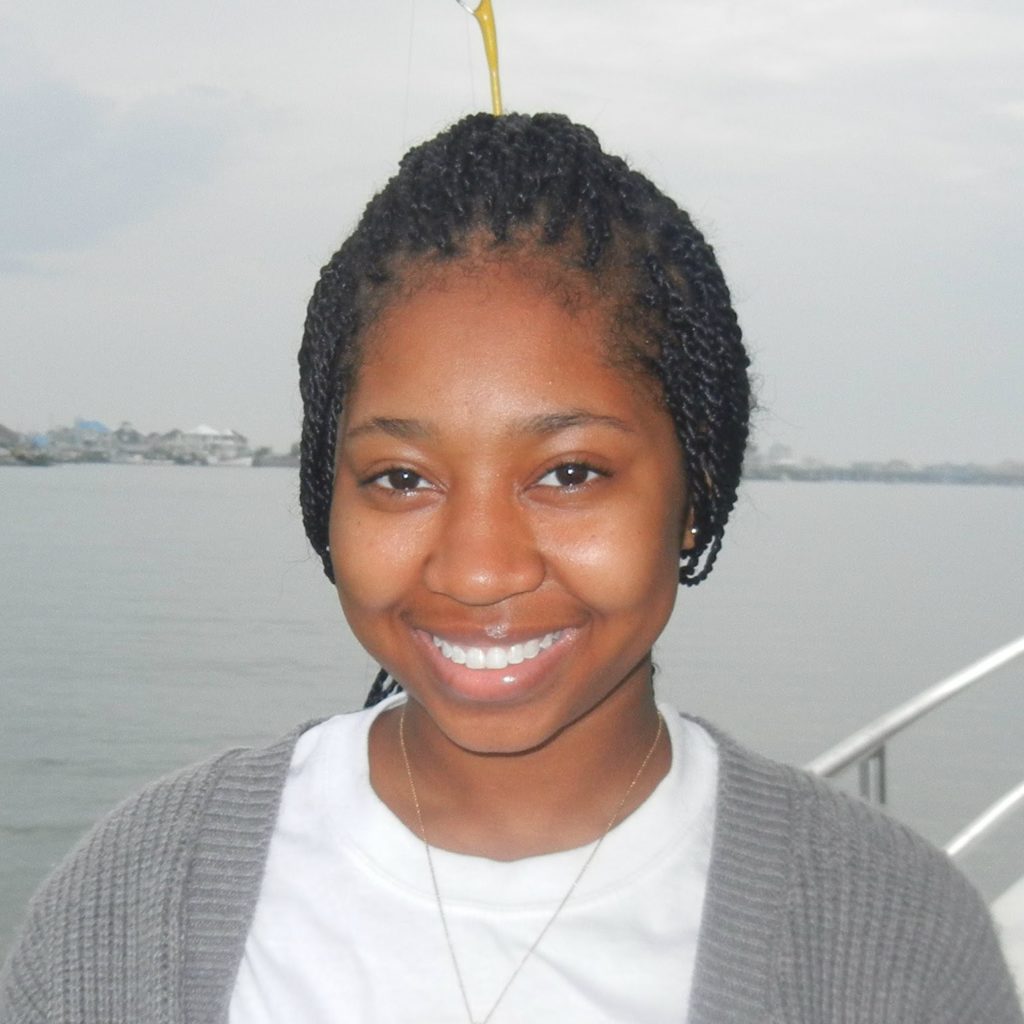
Deirdre Johnson, UMES
Testing anti-fouling properties of Aronia mitchurinii, Fucus sp. and Clathria prolifera
University of Maryland Eastern Shore
Faculty Mentors: Dr. Victoria Volkis, Dr. Andrew Ristvey, and Dr. Paulinus Chigbu
Graduate Mentor: Baruch Volkis
Marine biofilm formation is the accumulation of micro/macro organism on a submerged objects. This process occurs on worldwide trade ships and results in significant increase of fuel consumption and damage to ship hulls. As well, all petroleum platforms, piers and other under-water objects are affected. Previously, there have been solutions such as tributyltin in paint products to prevent biofilm formation, but this has been proven to be harmful to marine life and are banned in most of countries. Now, the need to find an environmentally friendly compound that is able to successfully prevent biofilm formation is important in order to save money on fuel costs for ships. In this project we tested extracts from plants and algae with strong antioxidant and antibacterial properties as potential antifouling agents. Qualitative methods were developed to test anti-fouling potential of such algae, berry and sponge extracts. Extracts of berries, algae and sponges were blended with polymers to test the effectiveness of antifouling properties. Quantitative and statistical methods for comparison of the effect of different plants are still in process of development.

Mario McGhee, Jr., UMES
Size at sexual maturity of male Jonah Crabs (Cancer borealis) in the Maryland-Virginia area
University of Maryland Eastern Shore
Faculty Mentor: Dr. Brad Stevens
Deep sea Jonah crabs (Cancer borealis) support a small but valuable federally-managed fishery, but lack of information about their size at sexual maturity prohibits adequate management. I collected 59 male Jonah crabs from the commercial fishery in the Maryland-Virginia area and measured carapace length (CL), width, chela length and width, and examined the vas deferens for presence of spermatophores. Mature and immature crabs were separated using Somerton’s method of comparing regression lines, and size at maturity was determined using logistic regression. Estimated size at maturity for male Jonah crabs was 56.42 ± 4.58 mm CL. This information will be extremely useful management and conservation of Jonah crab and expands knowledge on sexual characteristics in this species.

Isabel Obando, University of Puerto Rico Mayaguez
Validation of methodology on microbial community nitrogen cycling in agricultural ditches
University of Puerto Rico Mayagüez
Faculty Mentor: Dr. Joe Pitula
Graduate Mentor: Sabrina Klick
Soil microbes are responsible for many ecosystem services such as promotion of plant growth, nutrient cycling, and the degradation of pollutants and pesticides. Agricultural farms on the Delmarva Peninsula contribute nitrogen from fertilizer run-off. Fertilizer run-off collects in drainage ditches surrounding the farmland and then discharges into the watershed during rain events. Nutrients that reach the Chesapeake Bay and Maryland Coastal Bays stimulate harmful algal blooms. Harmful algal blooms are predicted to worsen from climate change and continued nutrient pollution. There is a need for new ways to reduce the amount of nutrients entering the surrounding bays from agricultural land. This past summer, sediment samples were collected from agricultural ditches on farmland in Crisfield, MD. Sites were analyzed for detection of bacterial nitrogen cycling genes through polymerase chain reaction (PCR) and confirmation through sanger sequencing. The 16s rRNA gene was used to start a clone library at two sites which contained a ditch that dries out through the summer and a ditch that is continuously filled with water. These ditches were compared for differences in bacterial communities. Based on the confirmation of the gene sequences for bacteria identification and nitrogen cycling metabolisms, traditional methods of screening environmental samples were validated. The next step of the project is to use high throughput sequencing to identify the microbial community and to examine what genes are metabolically active in the ditches.

So Jin Park, UMES
Characterization of glycan structures in Mytilus edulis hemolymph and hemocyte extracts
University of Maryland Eastern Shore
Faculty Mentor: Dr. Anthony Nyame
Graduate Mentor: Jorge Rodriguez
Rapid changes in ocean conditions have brought focus to its impact on marine life. Significant concern has been placed on mussels, specifically the blue mussel, Mytilus edulis, because of its role as a food source, in water quality and potential use as an environmental biomarker. Although it has been reported that environmental stressors can lead to immunosuppression in marine organisms, there is no information available on the detailed physiological mechanism that is affected by these changes and its impact on the immune system’s ability to combat potential pathogens. Here we take the first steps leading to the characterization and analysis of glycan structures found in hemolymph and hemocyte extract glycoproteins. These structures could be affected by these changes and be involved in mussel-pathogen interactions. Hemolymph and hemocytes have a high level of fucosylation as revealed by lectin blots with Aleuria aurantia lectin (AAL). Hemolymph AAL binding glycans are susceptible to PNGase F. Interestingly, hemocyte extract AAL binding was not susceptible to PNGase F or base treatment. This seems to indicate that the majority of the AAL binding glycans are N-linked glycans with an α1-3 fucosylated core. Additionally we had positive binding from Canavalia ensiformislectin (Con A), Pisum sativum lectin (PSA), Wisteria floribunda agglutinin (WFA) and wheat germ agglutinin (WGA).

Tyler Plum, West Virginia University
Using the position of digestive contents relative to chlorinated hydrocarbon (CHC) concentrations in the liver to map CHC movement through the smooth dogfish (Mustelus canis)
West Virginia University
Faculty Mentor: Dr. Eric May
Graduate Mentor: Jhamyllia Rice
Many studies have found that organic pesticides, especially chlorinated hydrocarbons, are absorbed by organisms through bioaccumulation in most marine ecosystems, usually in food chain bioaccumulation and magnification. Sharks are one example of a commercially and recreationally valuable organism that could be affected by these contaminants, as they are at a greater threat from bio accumulation, being top level predators. It is therefore important to understand how these chlorinated hydrocarbons are absorbed from their diet, and how they move as digestion occurs. To test this, we sampled a number of smooth dogfish, Mustelus canis, and attempted to correlate the results of gut content position analyses at the time of death to chlorinated hydrocarbon concentrations in the liver. Chlorinated hydrocarbon concentrations were expected to spike at different points in digestion, and by comparing the results of multiple shark diet analyses, which were sacrificed at varying stages of digestion, to their liver concentrations, it was assumed a conceptual map of how these chemicals are absorbed during digestion could be created. In reality, no chlorinated hydrocarbons were found in any of the liver samples, a highly unexpected event. It is assumed that either 1) chlorinated hydrocarbons are absorbed at a continuous rate from the liver into the bodily tissues (i.e. muscle), leaving them virtually absent from the liver, or 2) that the sharks are not absorbing chlorinated hydrocarbons into their body or liver because they are excreted as waste at a rate that does not allow adequate time for absorption.

Ciara Schnyder, UMES
Effect of light on vertical migration patterns of Chrysaora quinquecirrhaephyrae
University of Maryland Eastern Shore
Faculty Mentor: Dr. Maggie Sexton
It is desirable to be able to track the distribution patterns of jellyfish in order to help reduce the negative effects that the jellyfish are having globally. Being able to track where the jellyfish are benefits the fisherman, nuclear power plant operations, swimmers, and local bay areas. A significant concern in the Chesapeake Bay is the high abundance of the scyphozoan Chrysaora quinquecirrha medusae, known as sea nettles.C. quinquecirrha is known to appear in high abundance in a narrow range of temperature and salinity in the mesohaline portion of the Bay and its tributaries. This characteristic allows for predictions of timing and location of medusa occurrence. However, there is a high degree of unpredictability at the beginning of the season. In order to gain a better understanding of the beginning of the medusa bloom, it is necessary to understand earlier life stages. Here we focus on the ephyra stage, the first free swimming stage. Medusae are known to be negatively phototaxic, but the vertical swimming behaviors of ephyrae are unknown. Vertical swimming behavior can affect horizontal position in the estuary due to interactions with two-layer estuarine flow. We hypothesized that ephyrae would exhibit vertical swimming behaviors similar to the medusae. We exposed ephyrae to light and dark conditions in the laboratory and observed vertical swimming behavior. Results of this experiment showed that ephyrae did not behave significantly differently under different light conditions.

Mussie Talley, University of Maryland, College Park
Use of algae extracts as potential antifouling agents
University of Maryland, College Park
Faculty Mentor: Dr. Victoria Volkis and Dr. Paulinus Chigbu
Graduate Mentors: Baruch Volkis
Biofouling is a process that causes economic and environmental damage on a global scale. Synthetic antifouling agents such as TBTA, have a strong negative impact on marine life, and use of it is currently banned in almost all countries. As a natural alternative, we present here a project aiming to develop methods for examining potential antifouling agents extracted from plants, algae and crops. Some algae has been recognized in literature for having biogenic compounds that protect against biofilm. Along with method development, this research examines Ulva lactuca, Chaetomorpha, and Agardhiella, species reach by antioxidants and essential oils, as potential natural additives to antifouling formulations. The potential biogenic compounds were extracted from the different species of algae; then extracts were incorporated into polymer blends to formulate the protecting coating. Antifouling tests were performed on samples of prepared blends. Preliminary qualitative tests have shown that samples covered by blends containing these extracts experience less biofilm formation as compared for non-protected surfaces. However, quantitative methods for comparison of different species and different formulations are still in development.


